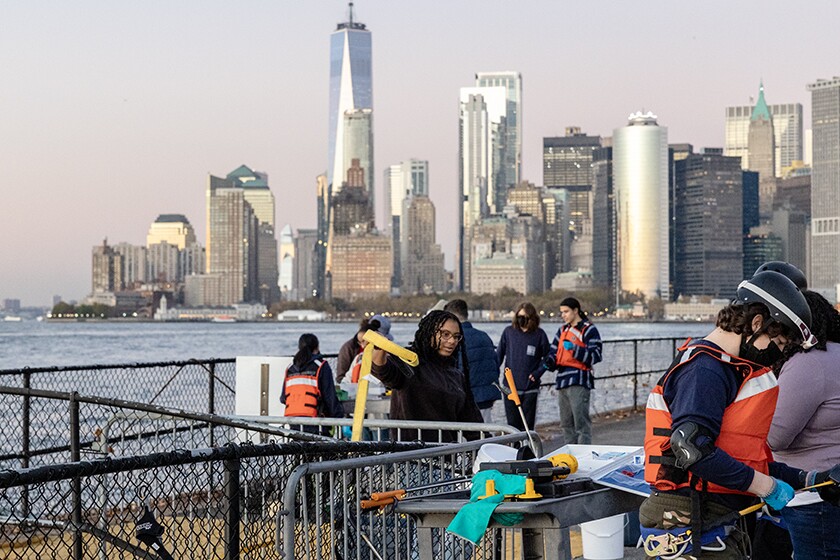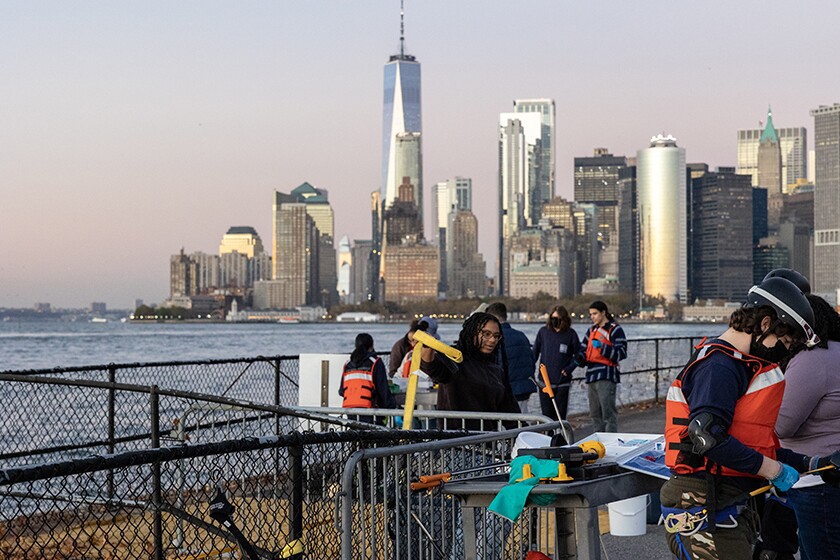
(SOM/ Miysis)
In Brief:
In a bid to make New York City a global leader in climate change research, Mayor Eric Adams recently unveiled plans for the New York Climate Exchange, an international center that will focus on developing and deploying solutions in response to the worldwide climate crisis. The state-of-the-art facility will be located on Governors Island, just off the southern tip of Manhattan.
Although global in scope, the Exchange is also designed to help New Yorkers benefit from the rapidly evolving green economy by promoting education, training and workforce development opportunities in climate and environmental fields.
“Today, here in the heart of New York Harbor, we are taking a giant leap toward a cleaner, greener, more prosperous future for every New Yorker,” Mayor Adams said at the announcement. “This is a place for every New Yorker to learn and engage with the environment, because all of us are in this together.”

(SOM/Brick Visual)
A Historic Location
The federal government transferred ownership of the island to New York City in 2003 with the exception of 22 acres that are still maintained by the National Park Service. Uninhabited and accessible only by ferry, the island was opened to the public in 2005.
Today Governors Island is mostly parkland, some of which is given over to a luxury glamping site offering spectacular views of Lower Manhattan. A public maritime high school occupies a few of the former Coast Guard buildings, drawing the most daily visitors. Many of the school’s 500 faculty, staff and students work closely with the Billion Oyster Project, a nonprofit also based on the island, working to restore the harbor by replenishing its depleted oyster beds.

(David Kidd)
Built for Climate Resiliency
As envisioned by the architectural firm Skidmore, Owings & Merrill, the final design of the Exchange was selected from three proposals that were considered for the site. Plans call for two new buildings as well as the restoration and adaptive reuse of 170,000 square feet of space within existing historic structures. Utilizing sustainable design and construction, these spaces will serve to accommodate classrooms, research labs, exhibition space, student housing, hotel rooms and meeting space.
When completed, structures in the Exchange will be the first in New York City to meet the standards of the Living Building Challenge, an international sustainable building certification program. The new campus will also be one of the first projects in the country to achieve True Zero Waste certification, with 95 percent of waste diverted from landfills.

(SOM/Brick Visual)
Construction of the project is slated to begin in 2025 at a cost of $700 million. Initial funding will come from previously allocated capital funding, the Simons Foundation, Bloomberg Philanthropies and a consortium of donors at no additional cost to city taxpayers. The first phase is expected to open in 2028.

(David Kidd)
A Mission to Educate
With a coalition of postsecondary partners, led by Stony Brook University, the primary goals of the Exchange are to further climate research and to educate and prepare New Yorkers for the green jobs of the future. To that end, the new Exchange campus is expected to house hundreds of college students. An expansion of the existing Harbor School is already well underway, adding additional buildings and students.
Brian Reagor, a director at the island-based Billion Oyster Project, is looking forward to an influx of young environmentalists. “It’s going to provide a diverse and experienced pool of potential supporters for our work,” he says. “We think it'll open up an entirely new career path, or dozens of new career paths, for the students of the city. We're excited to be coupled with the Harbor School and the Exchange.”

(David Kidd)











